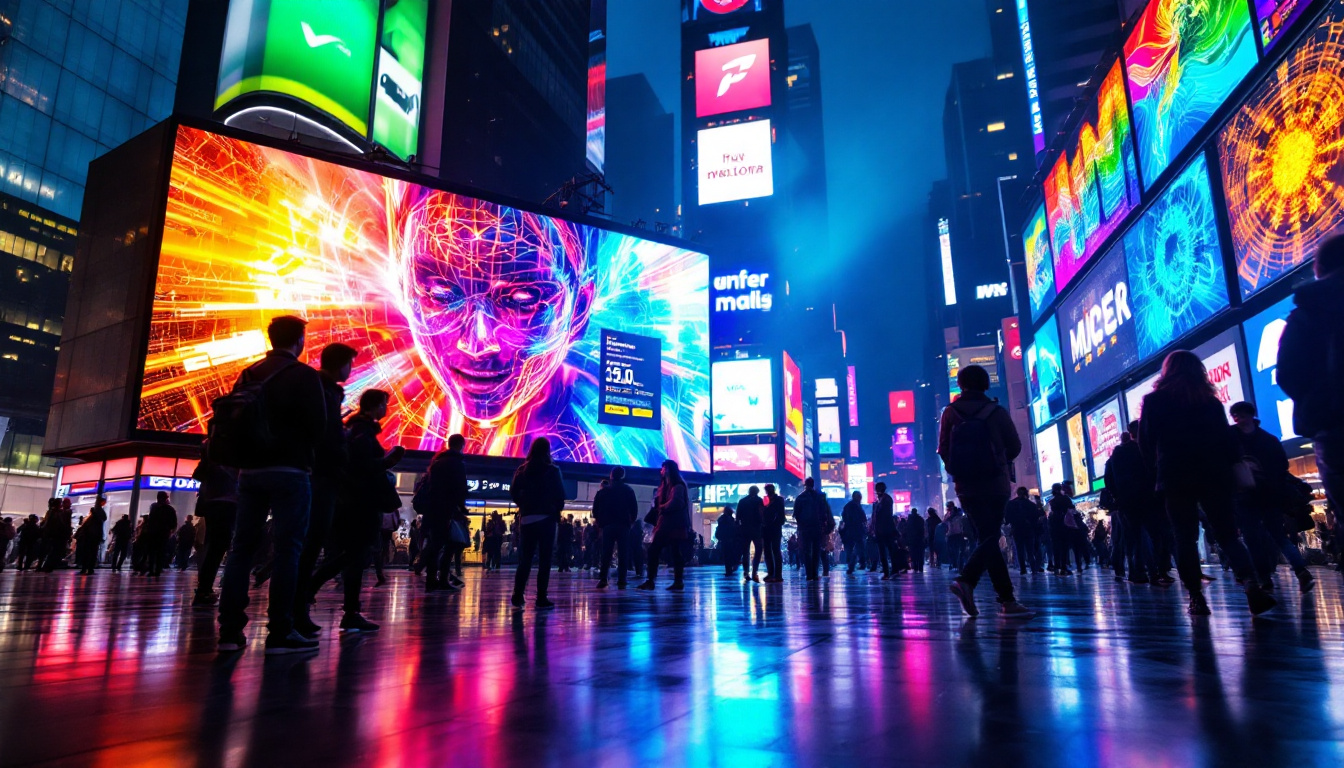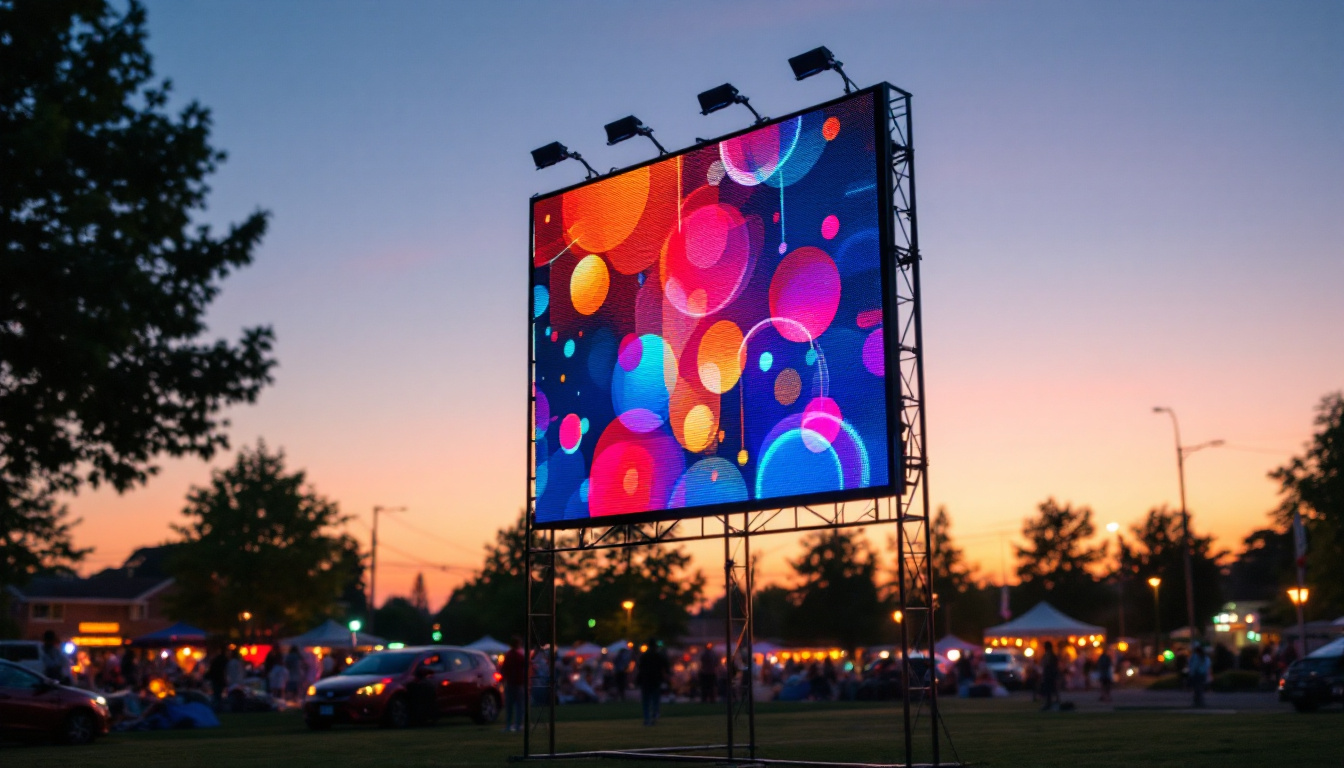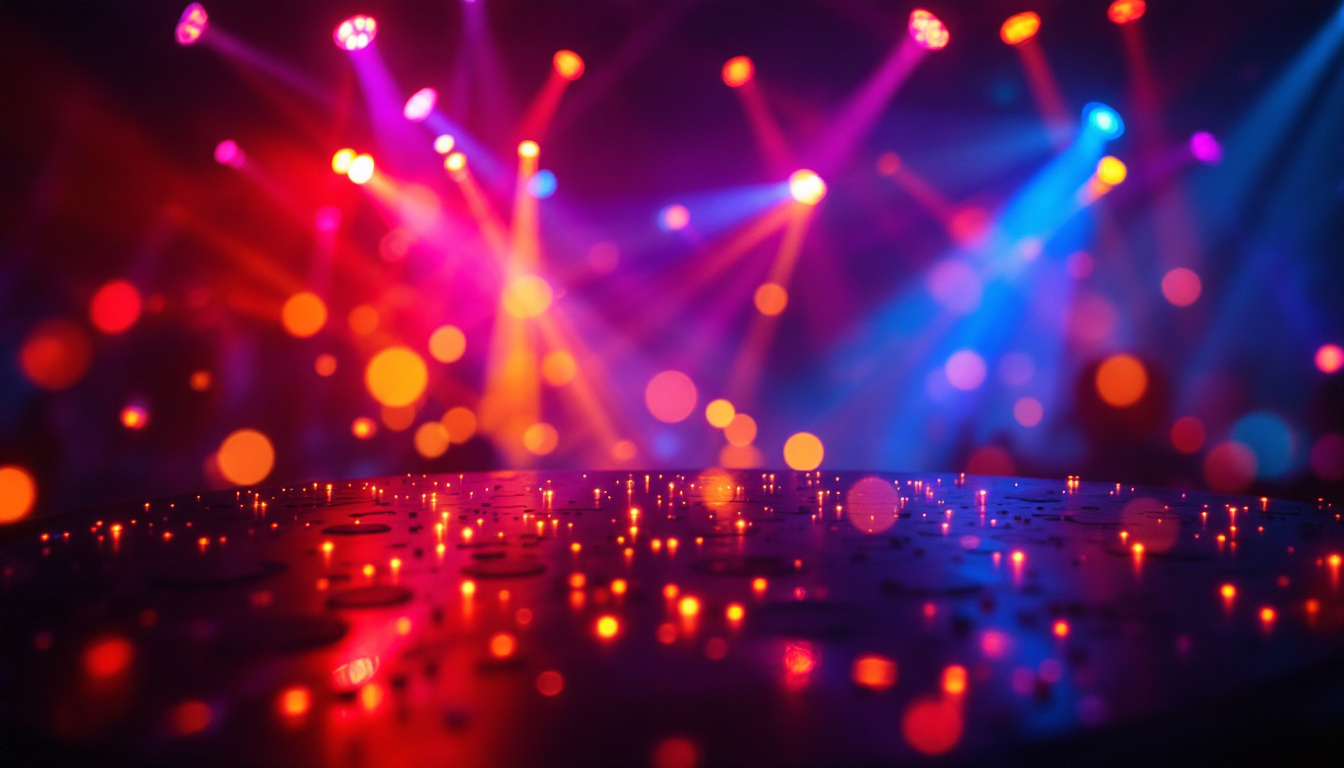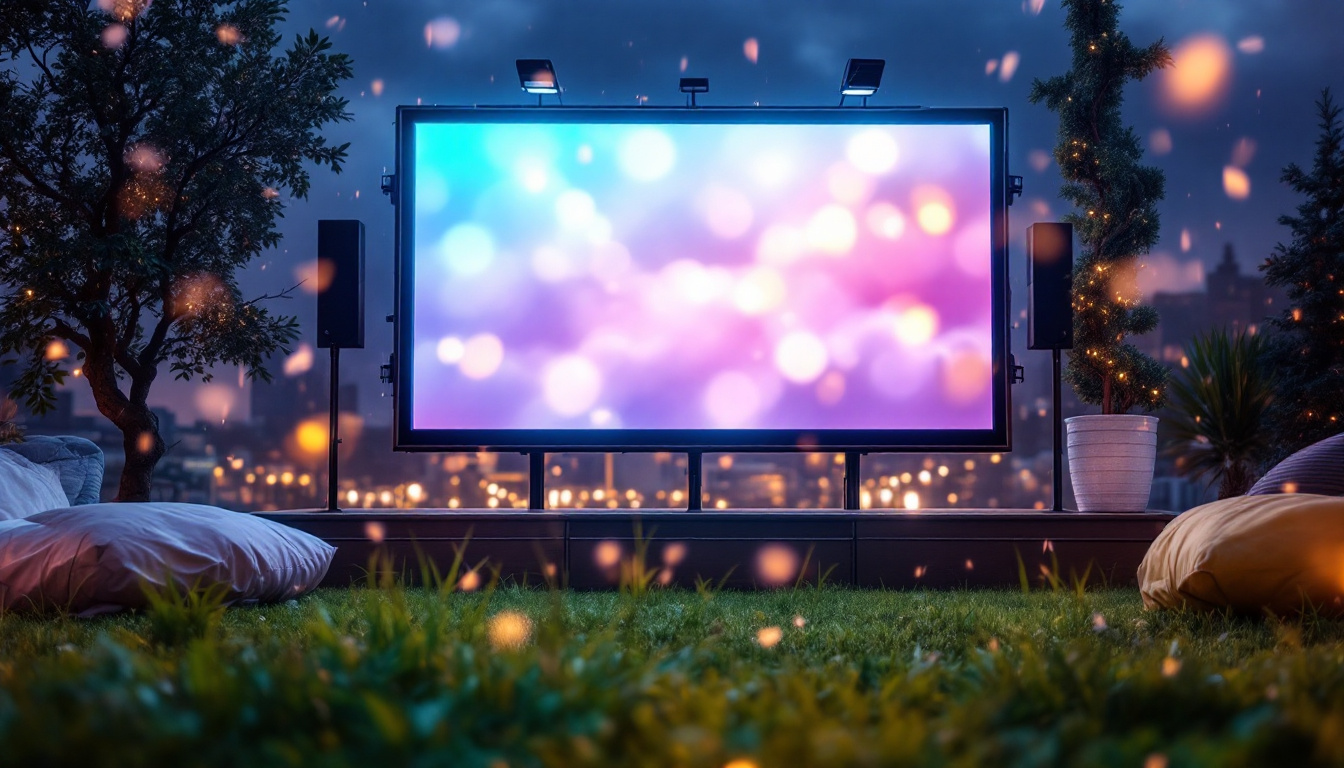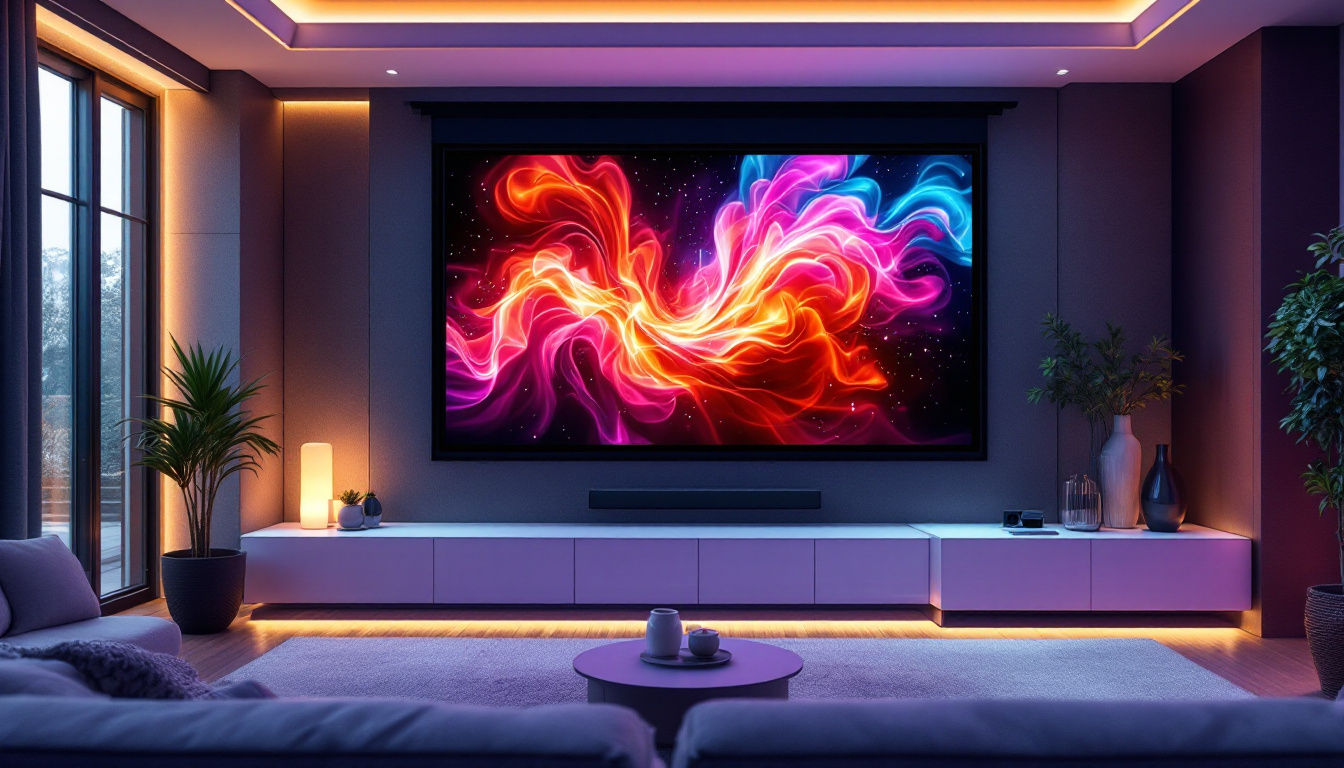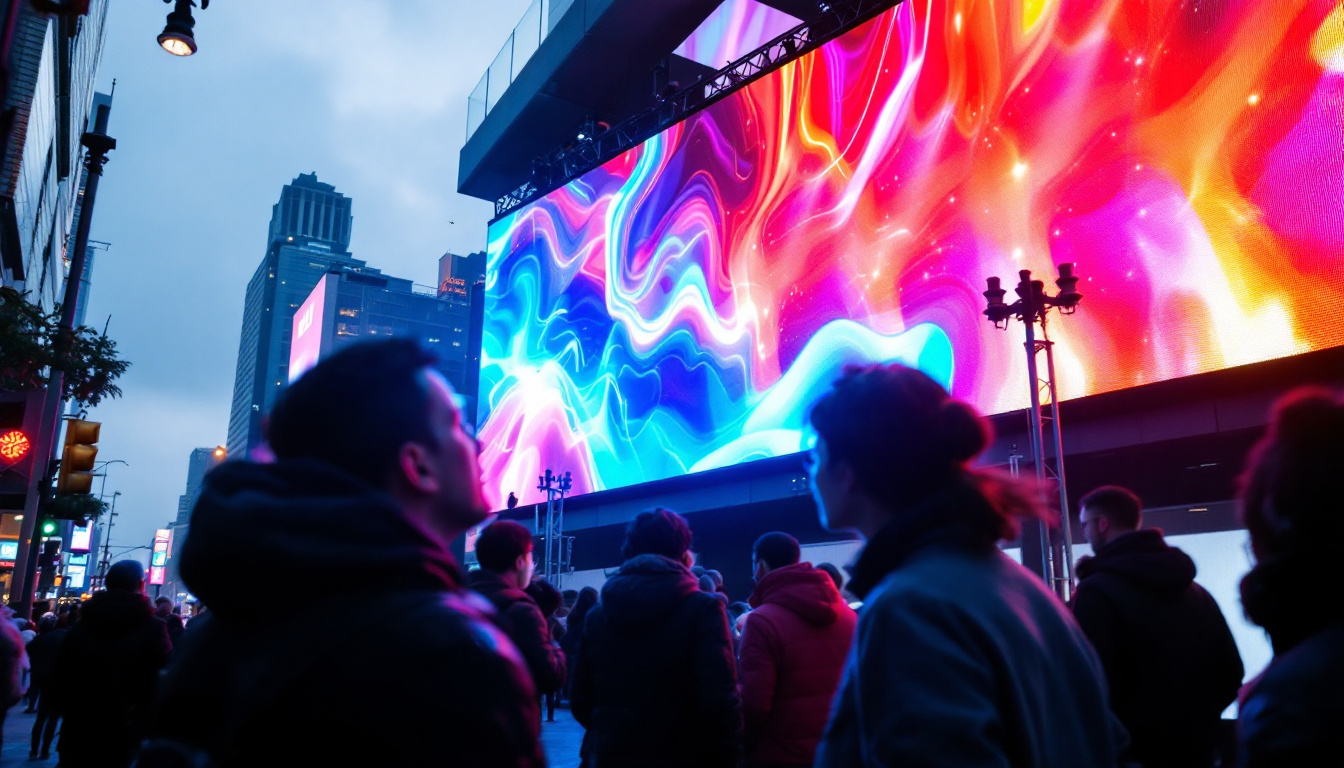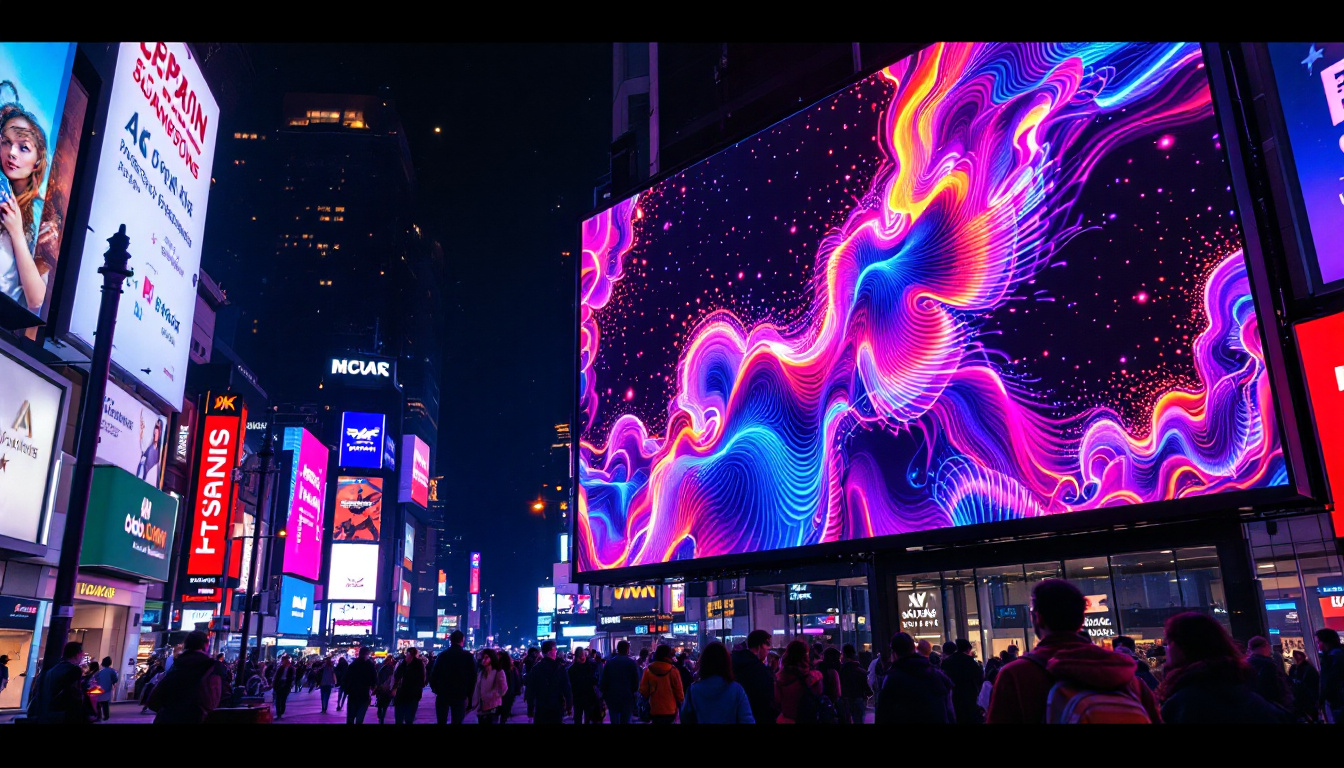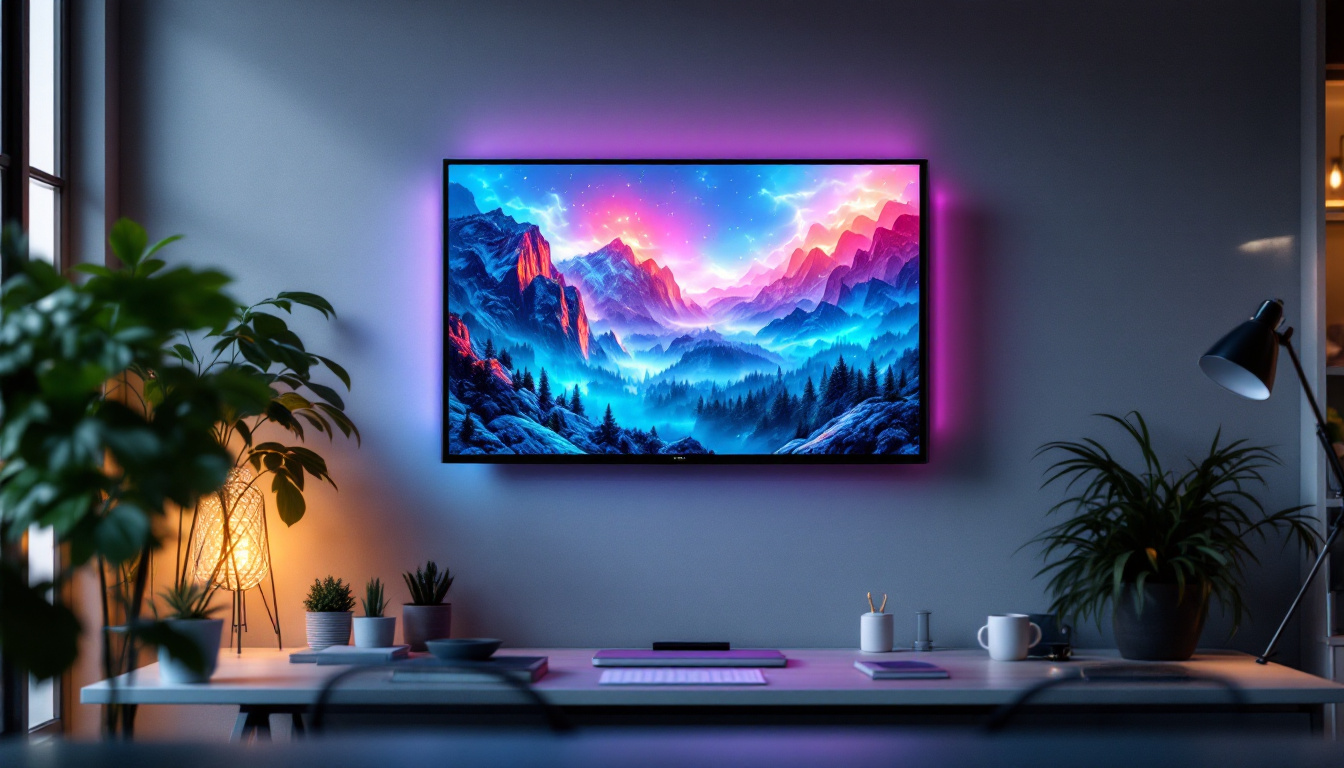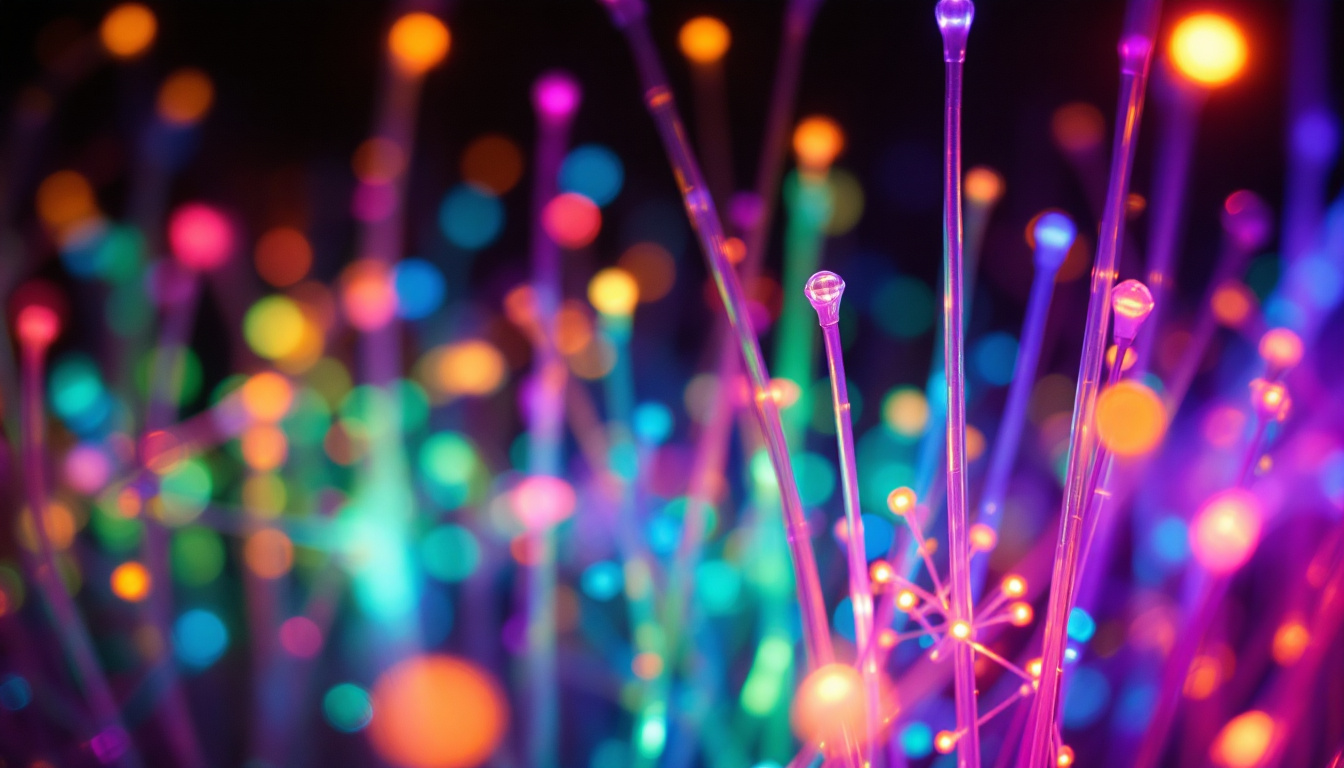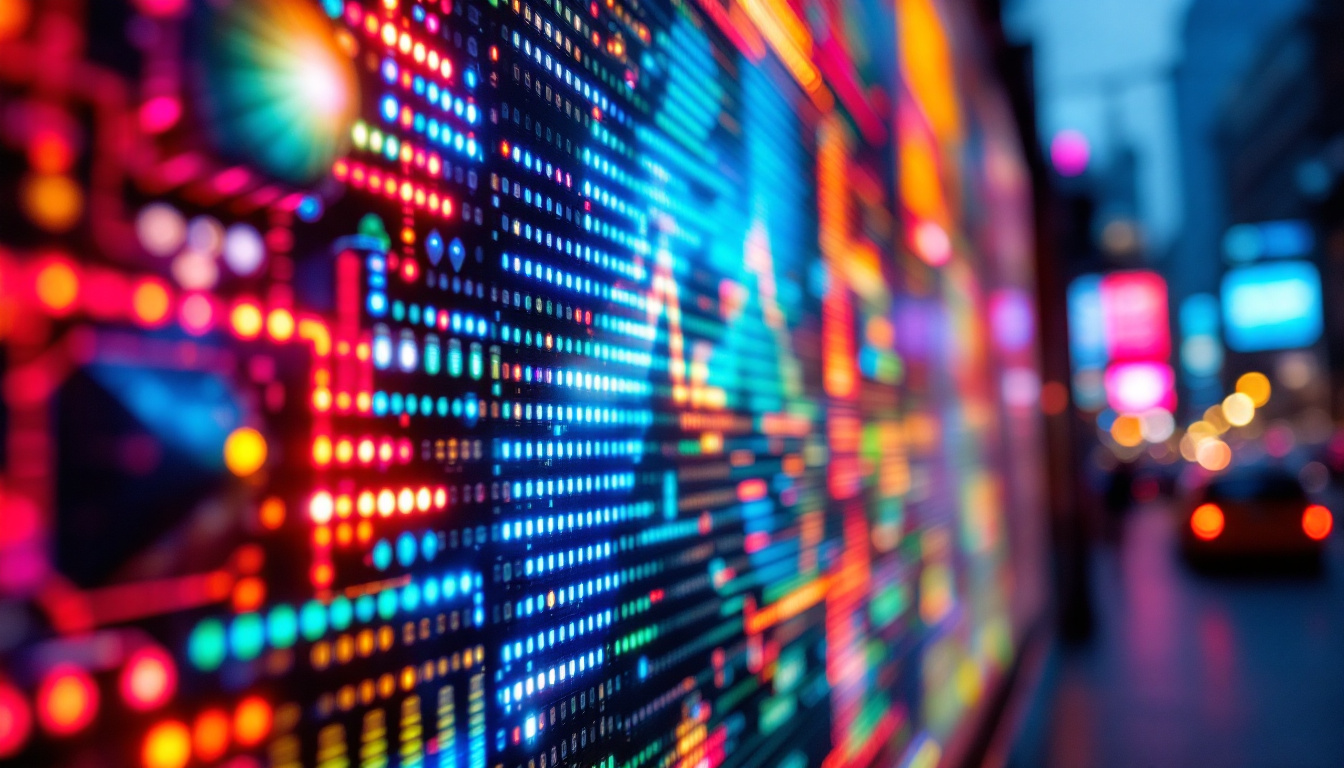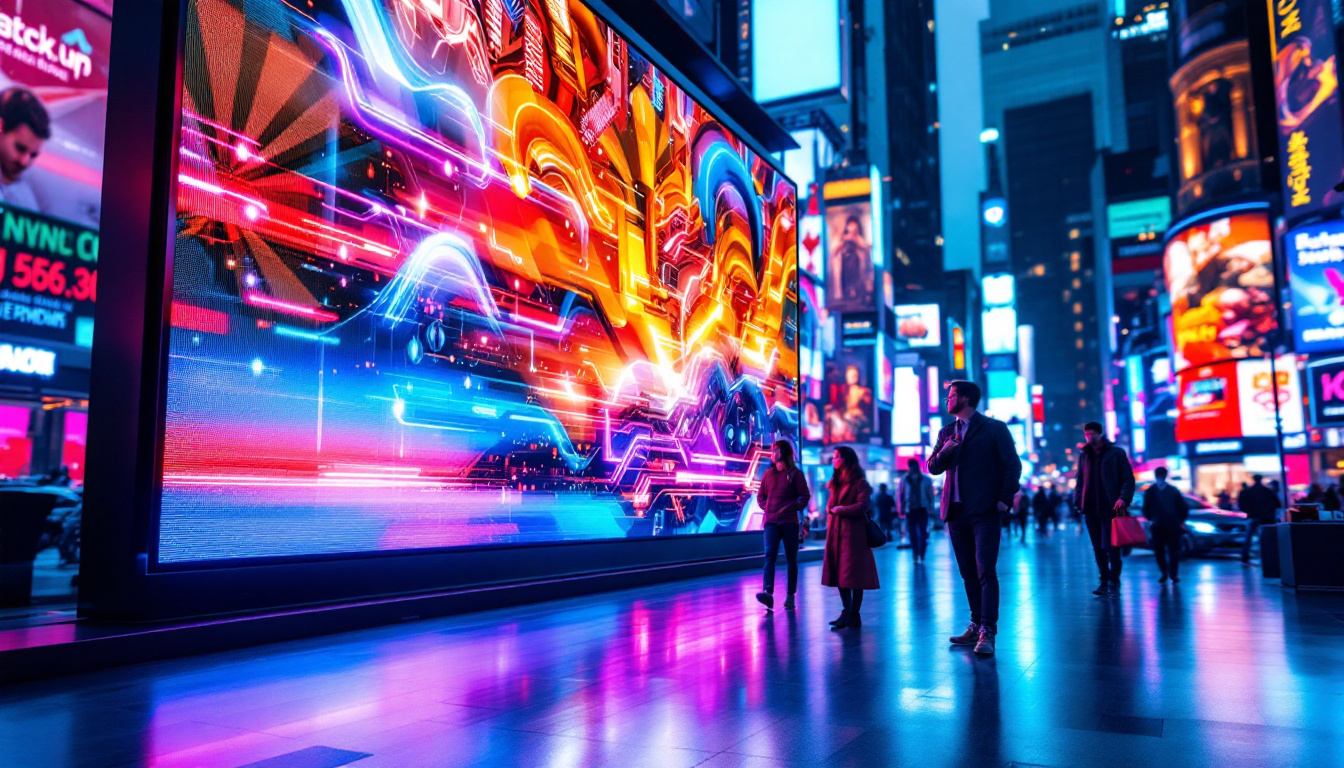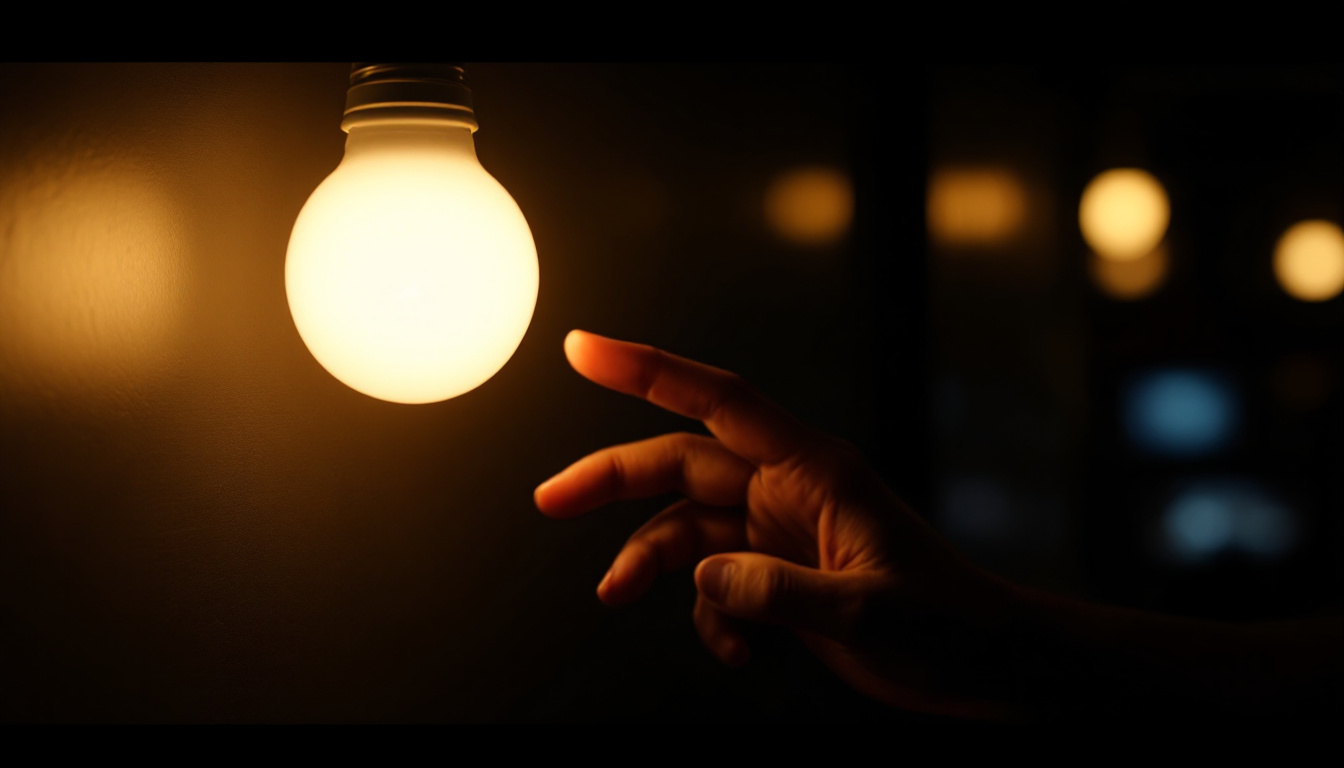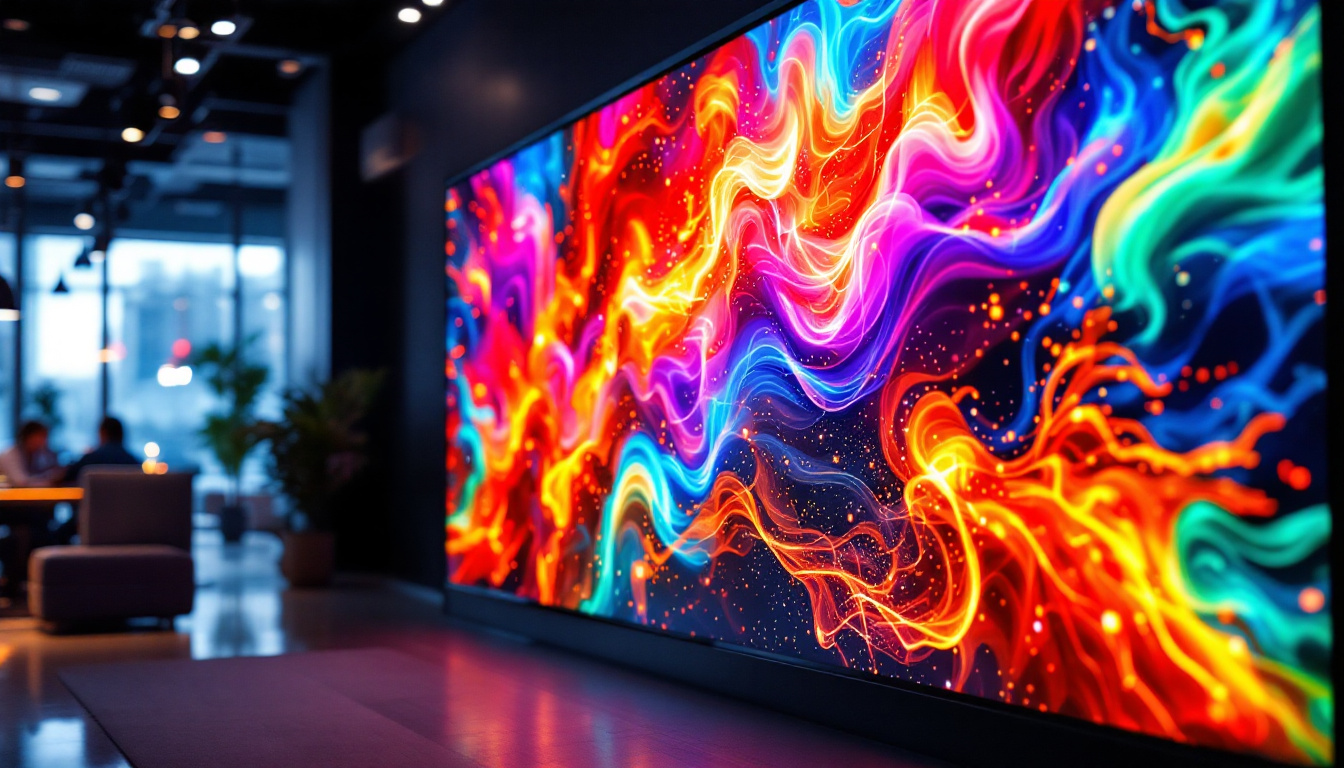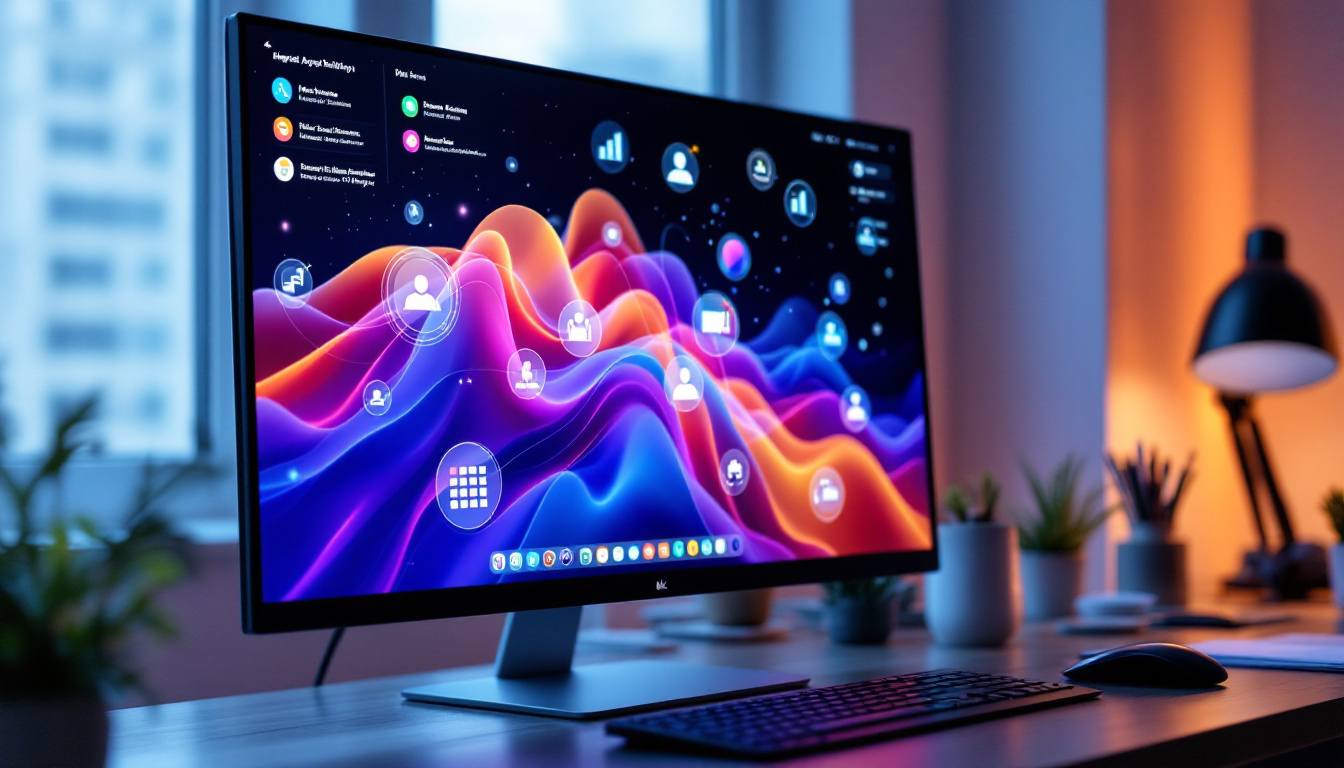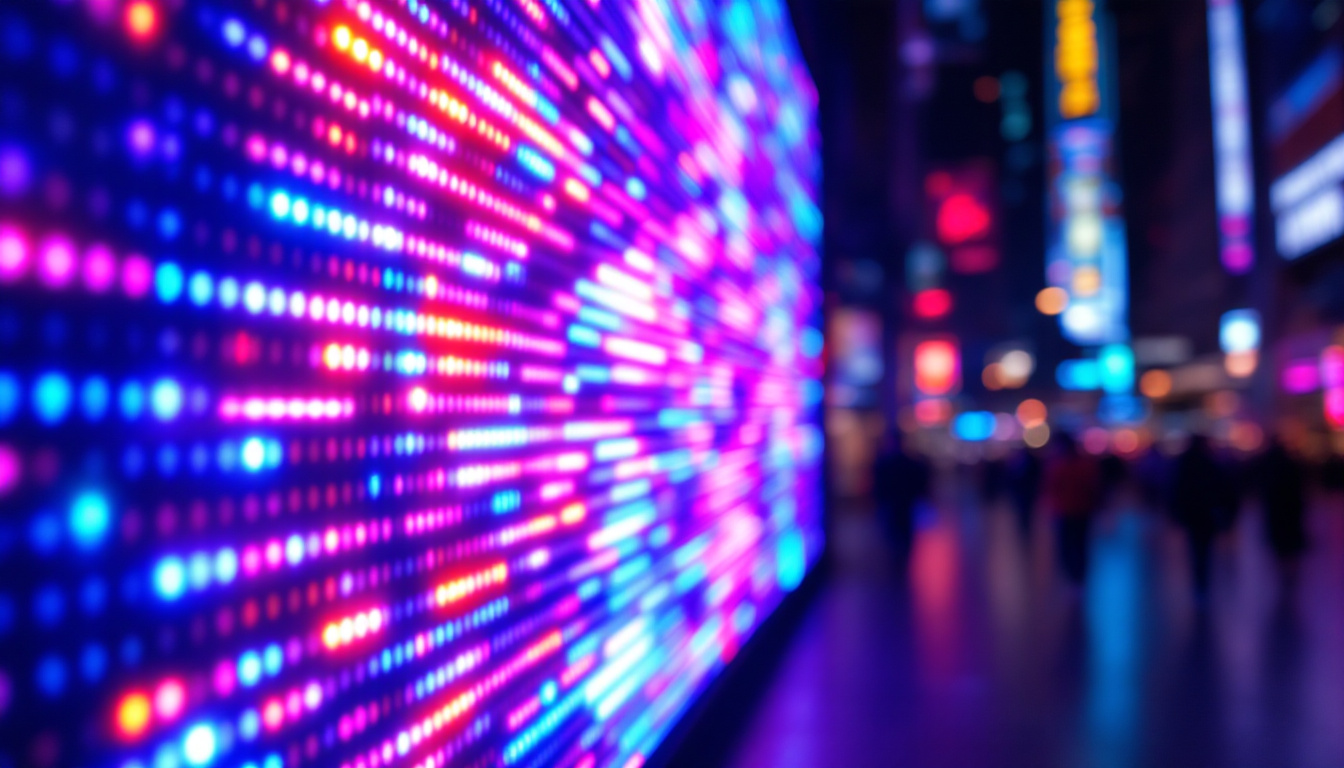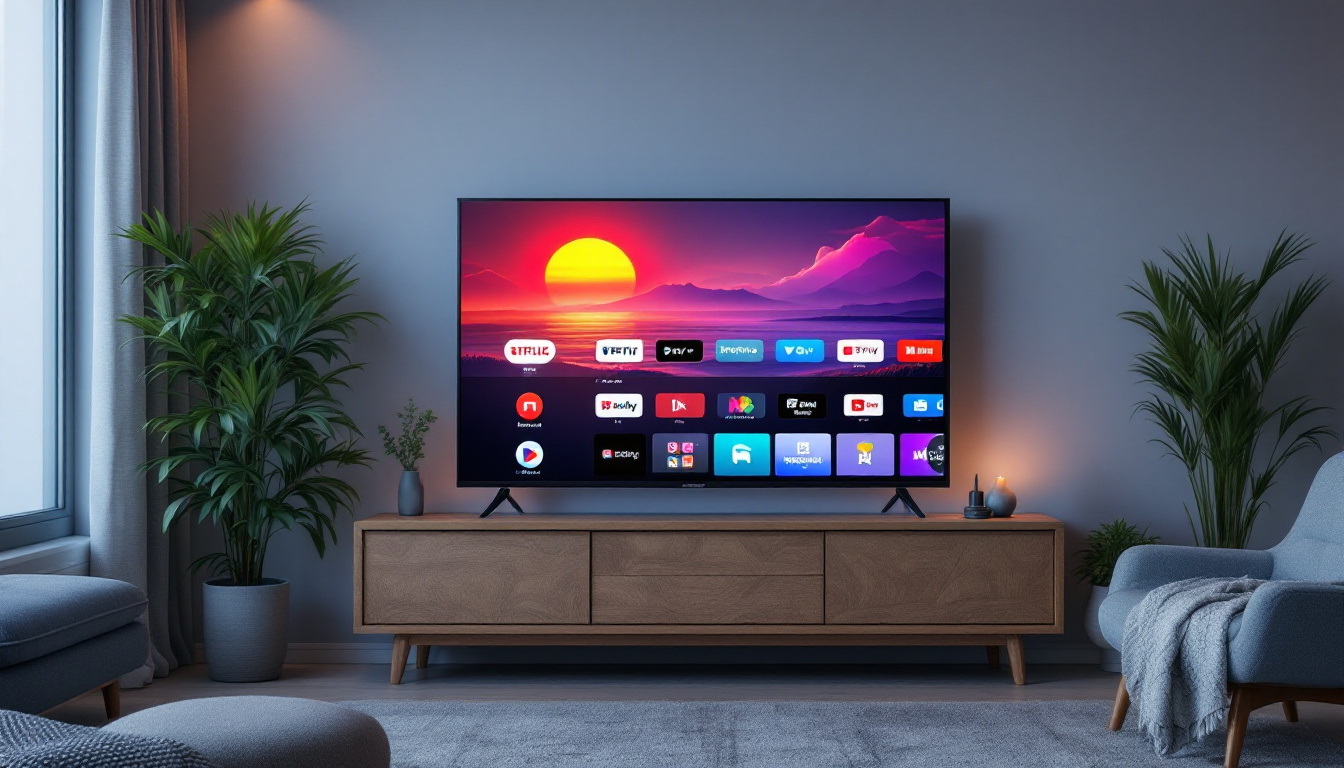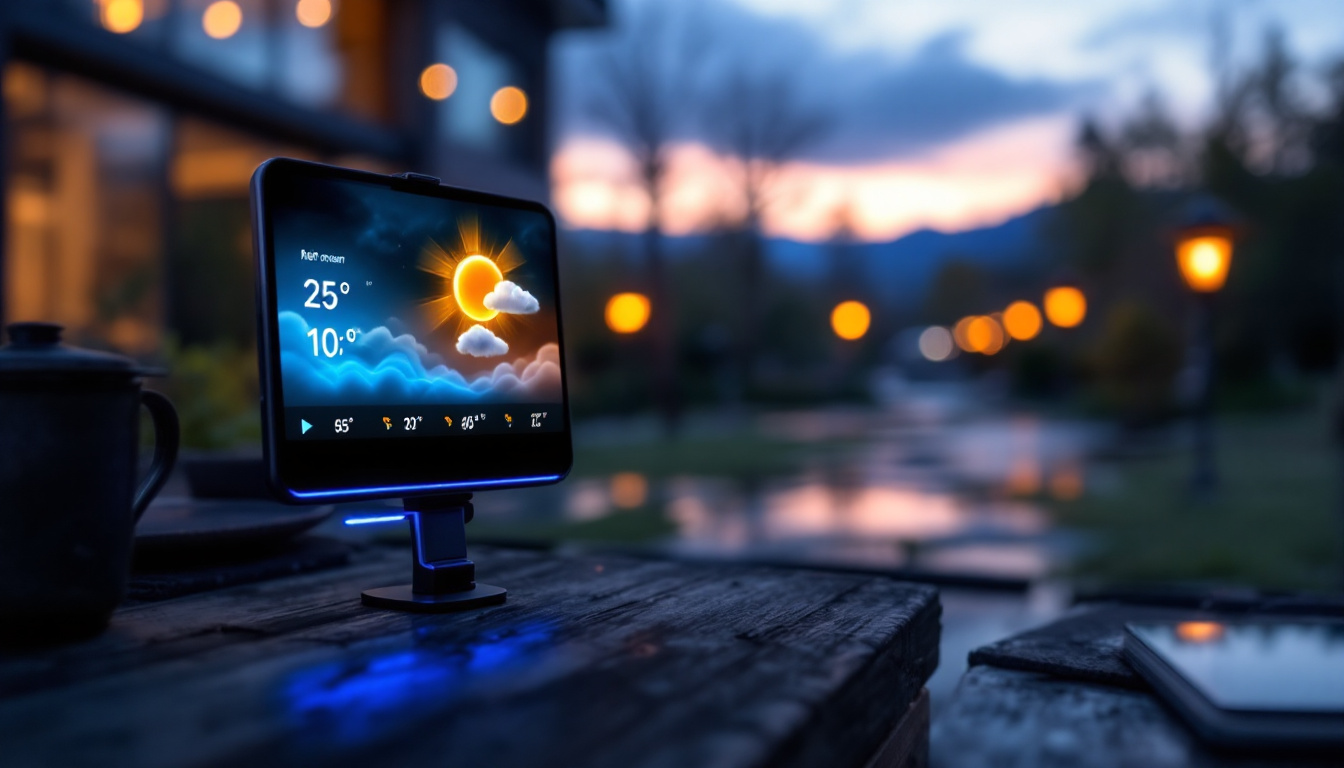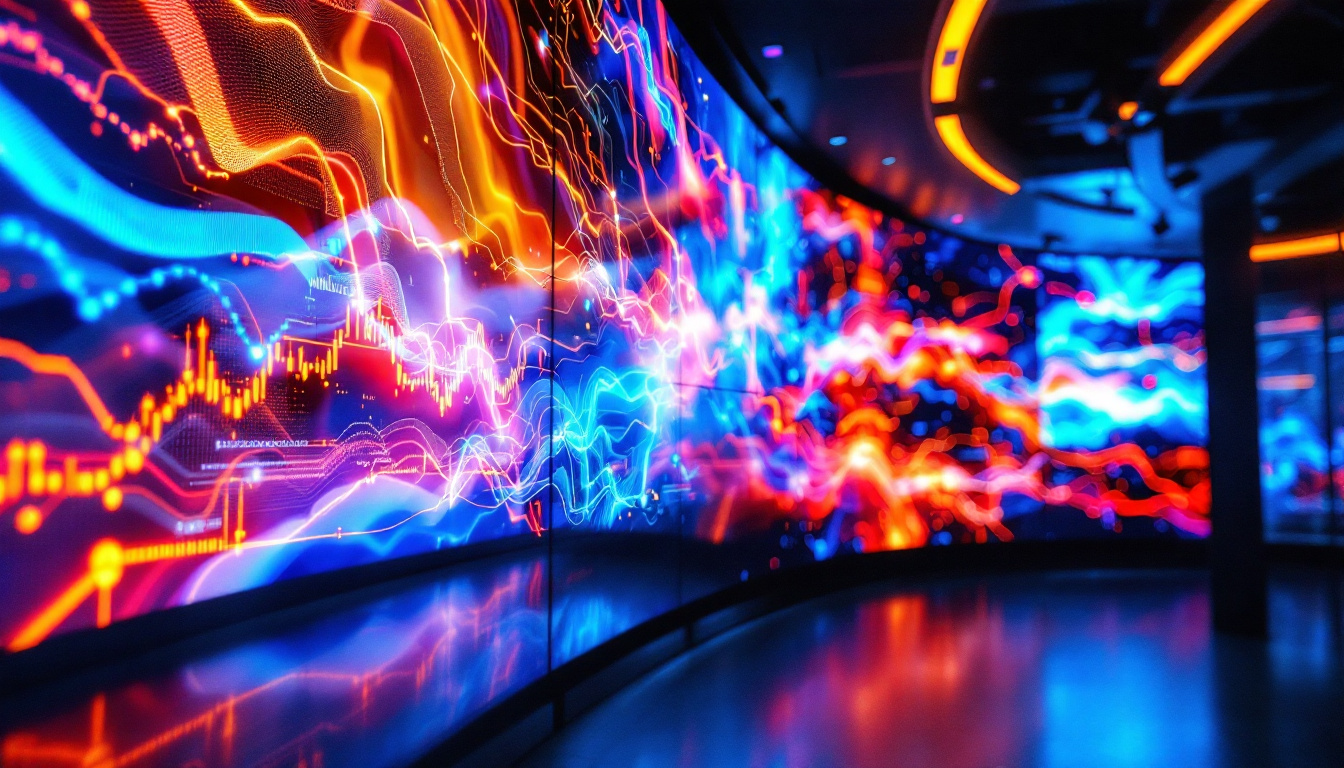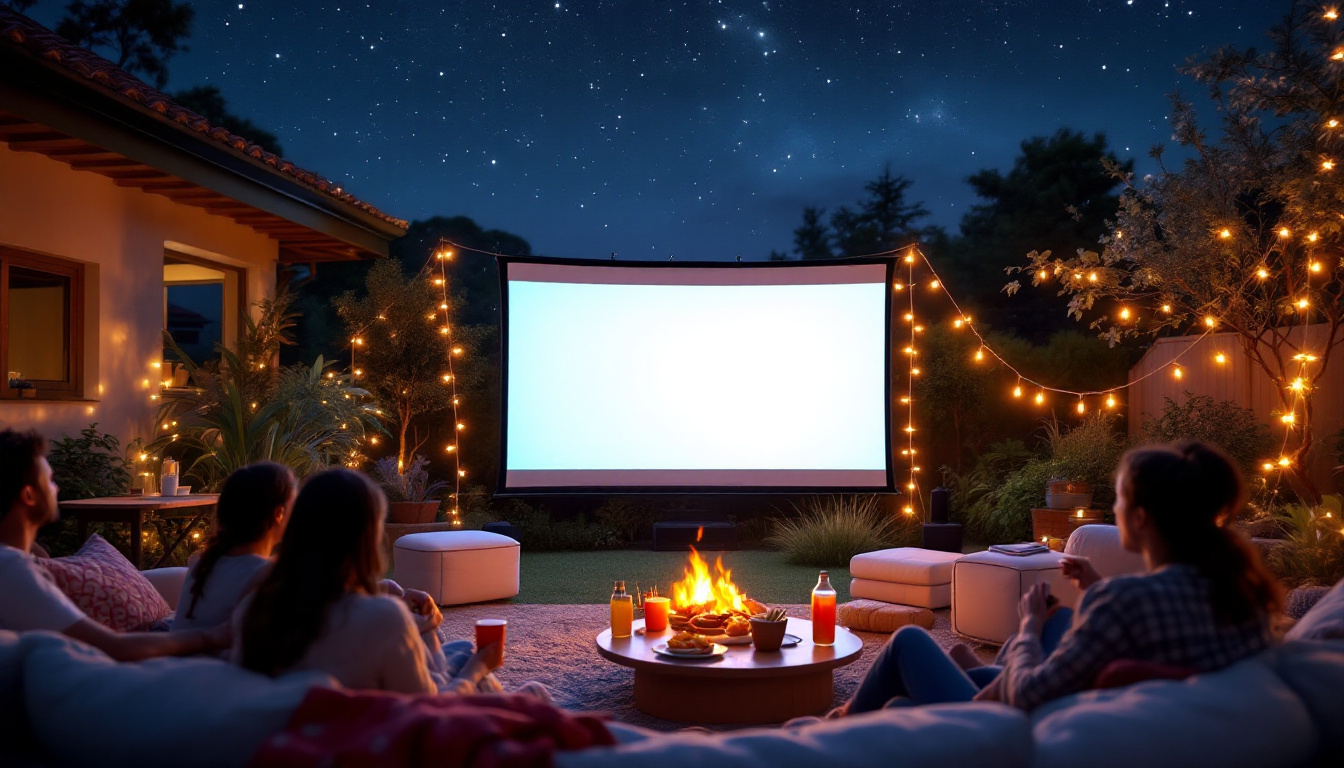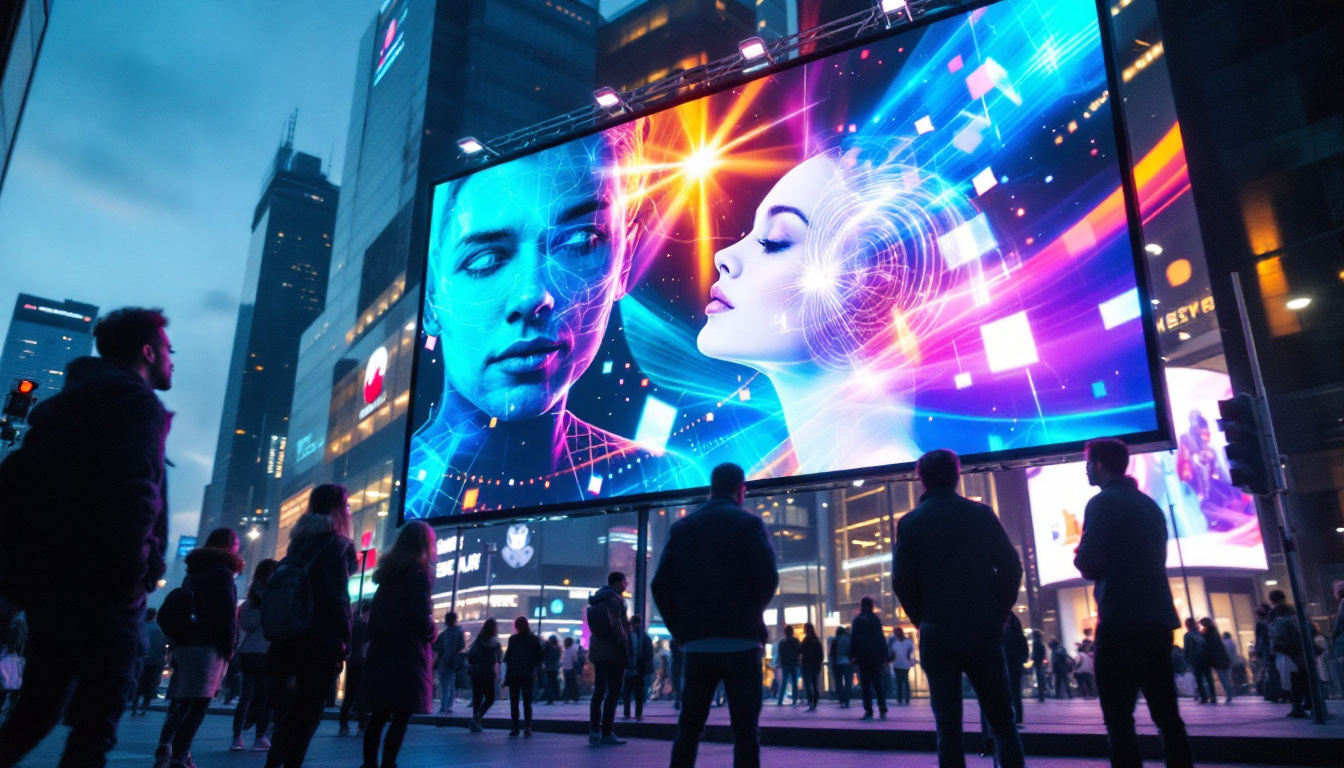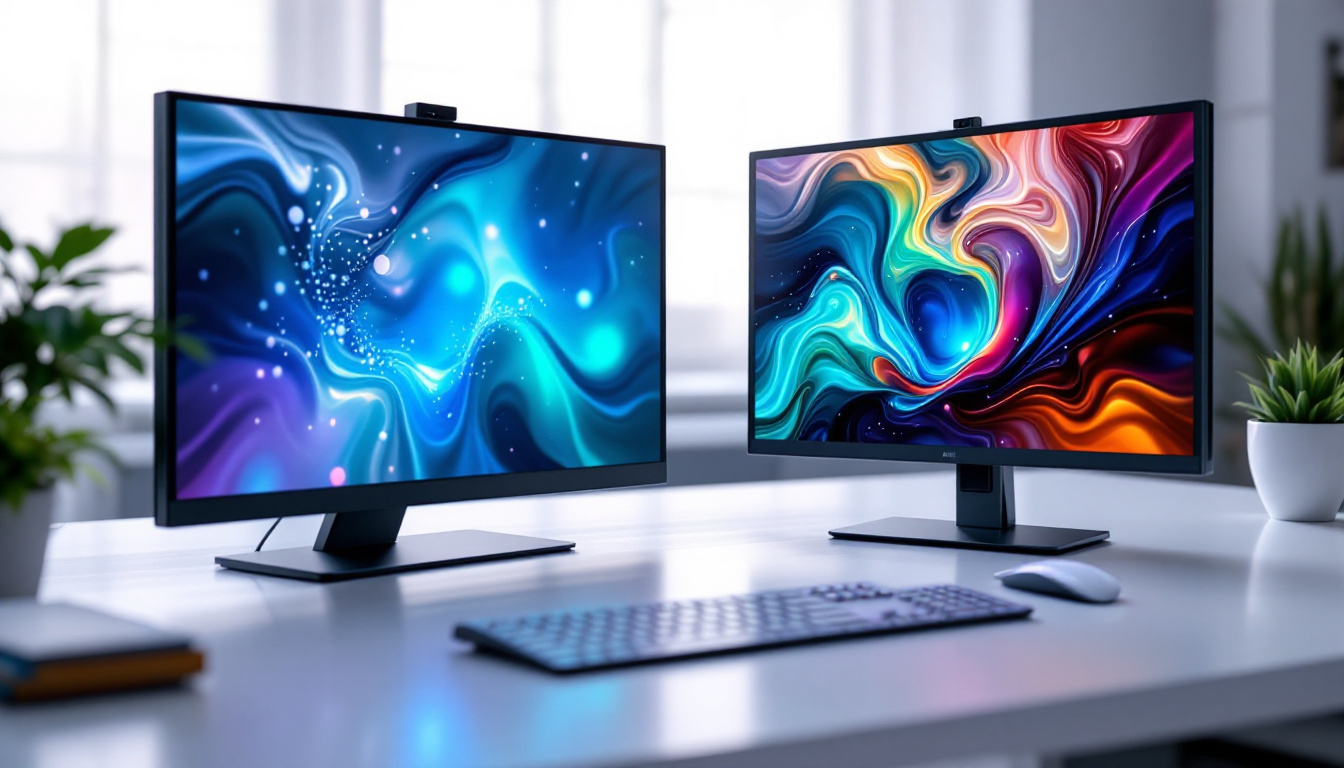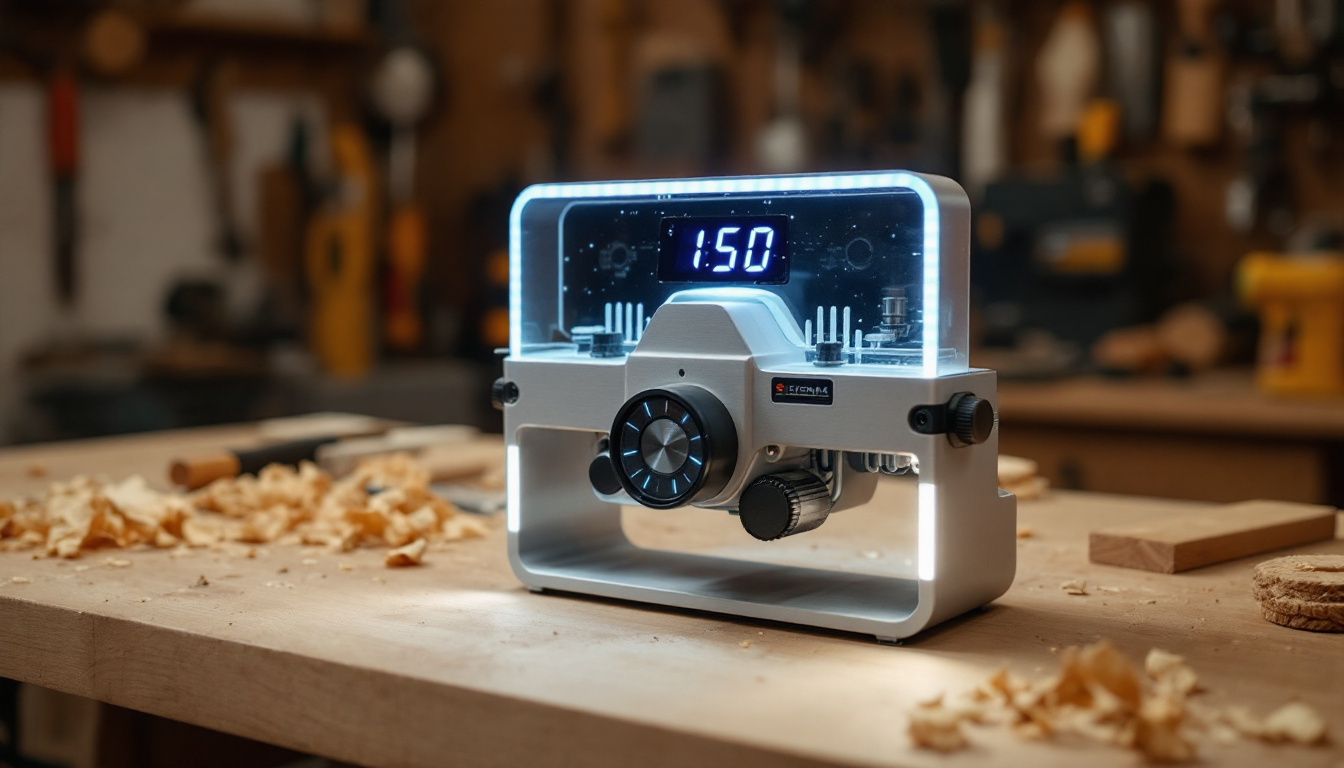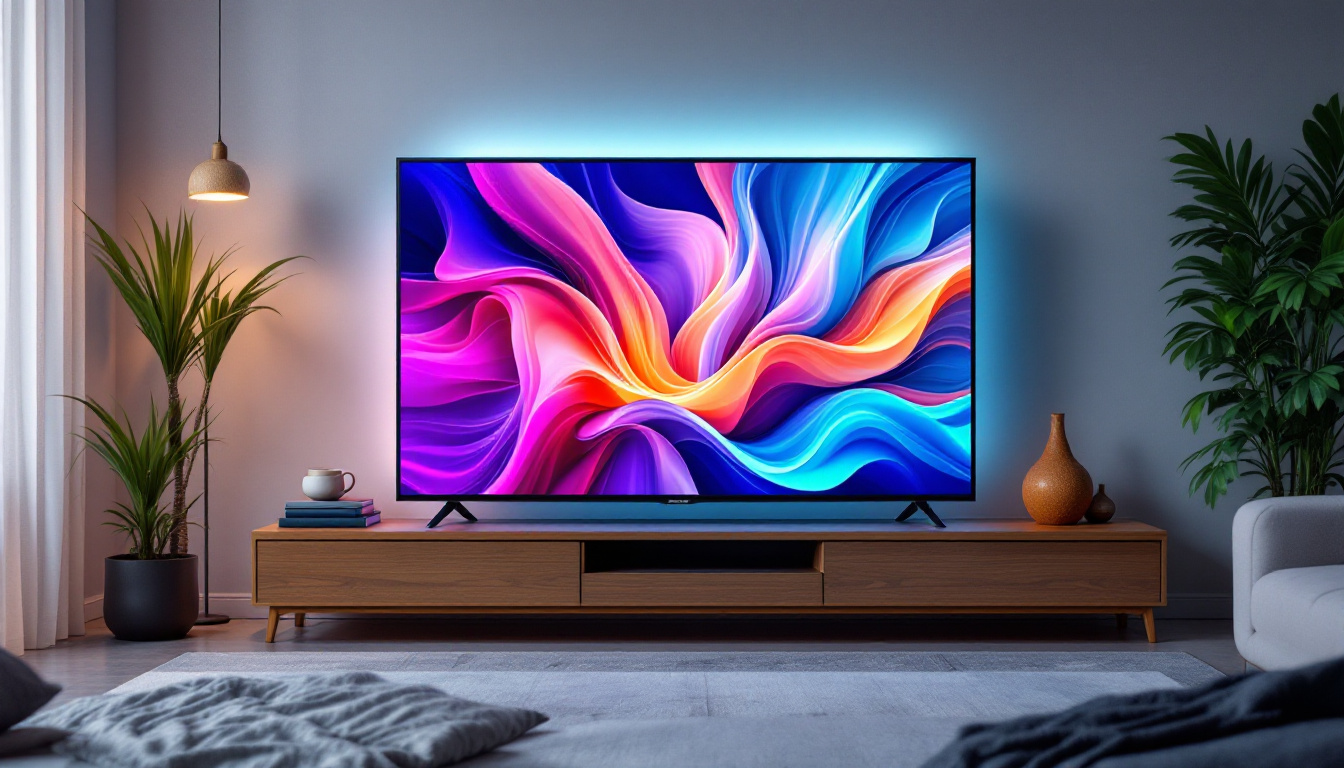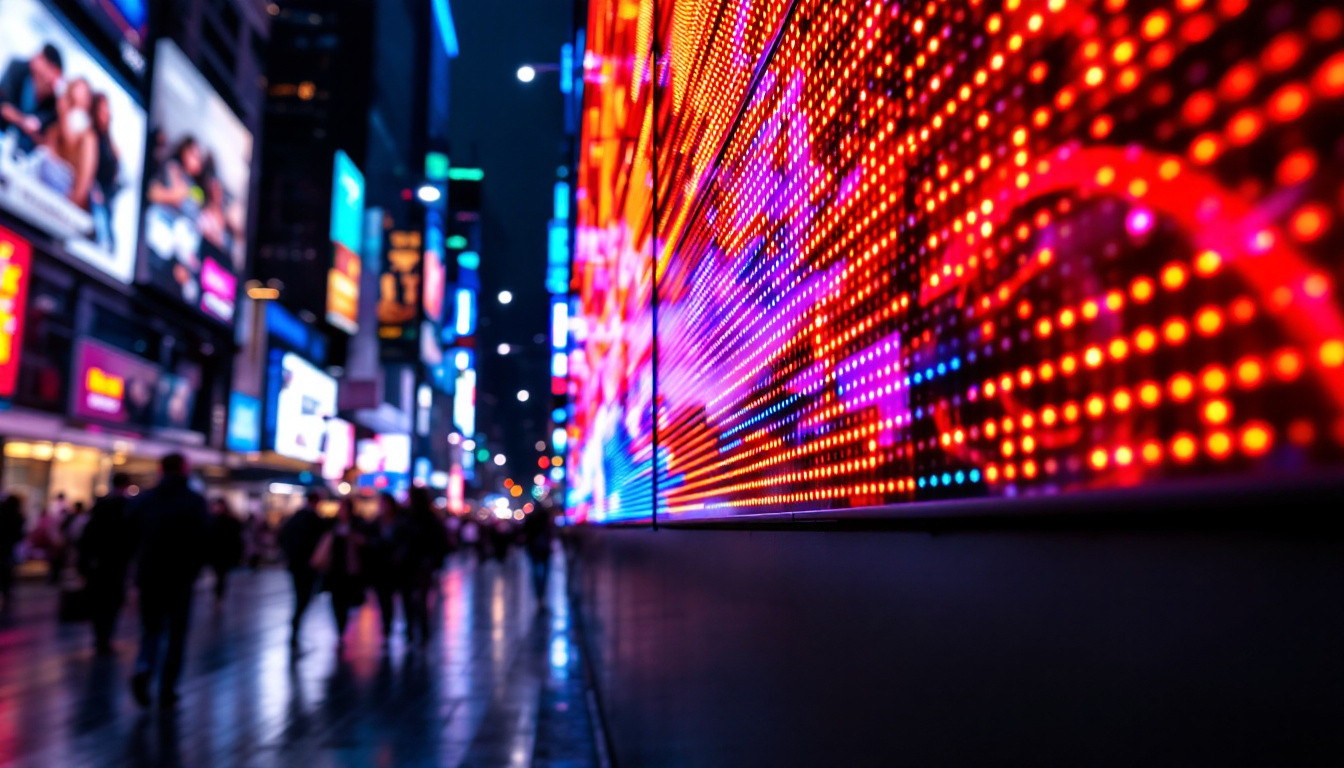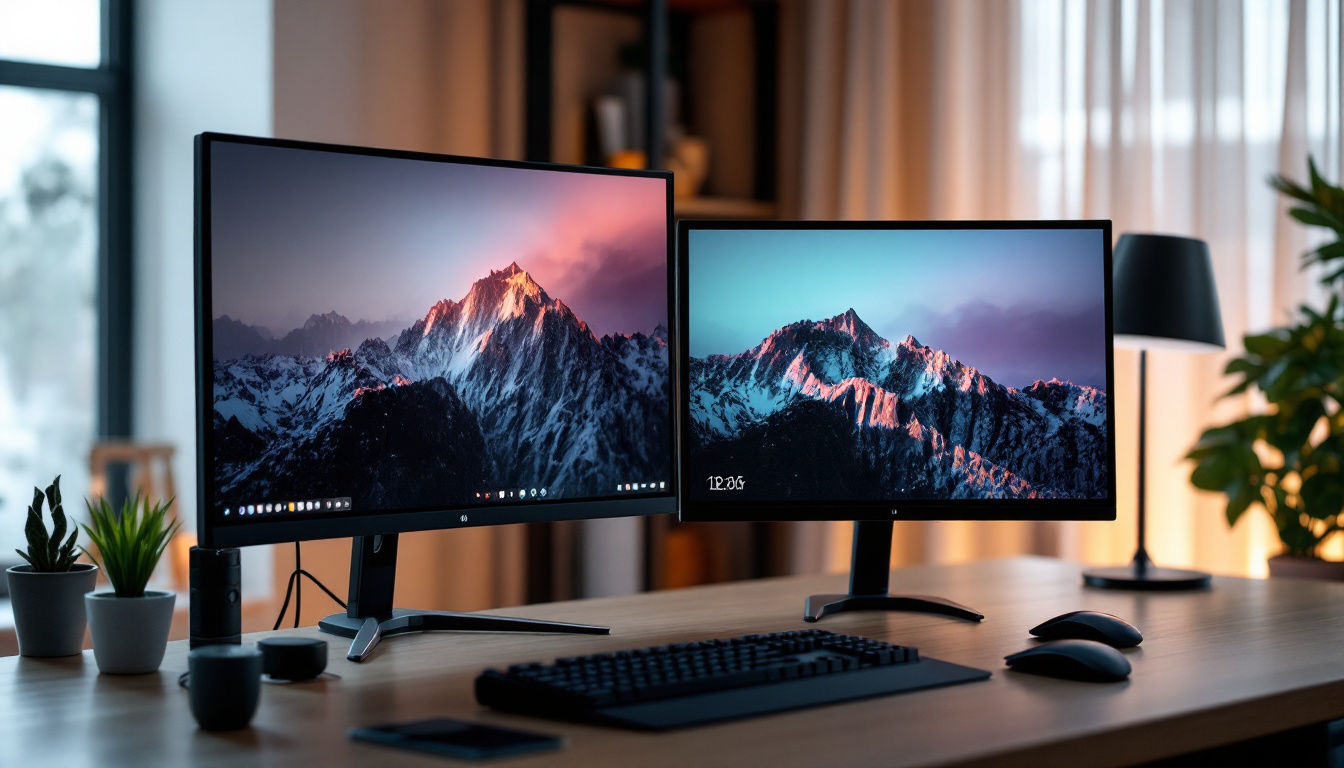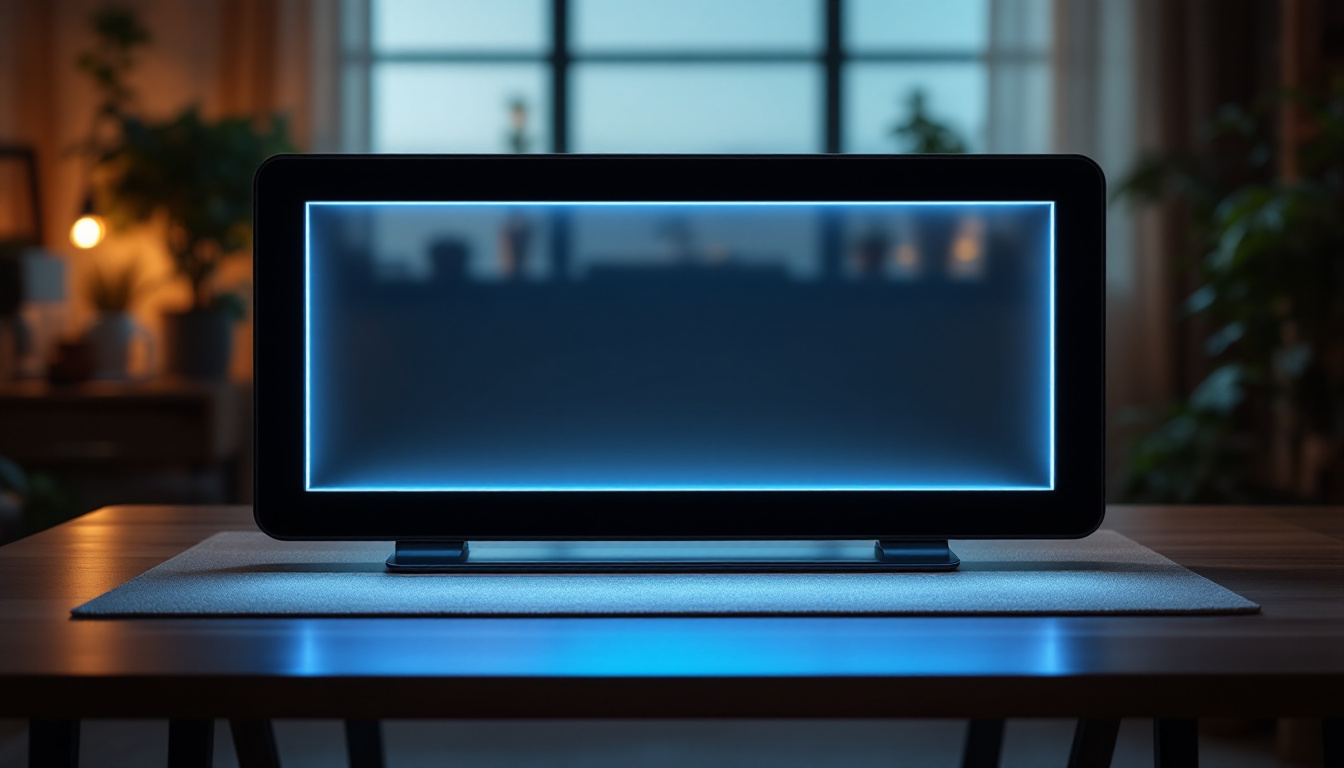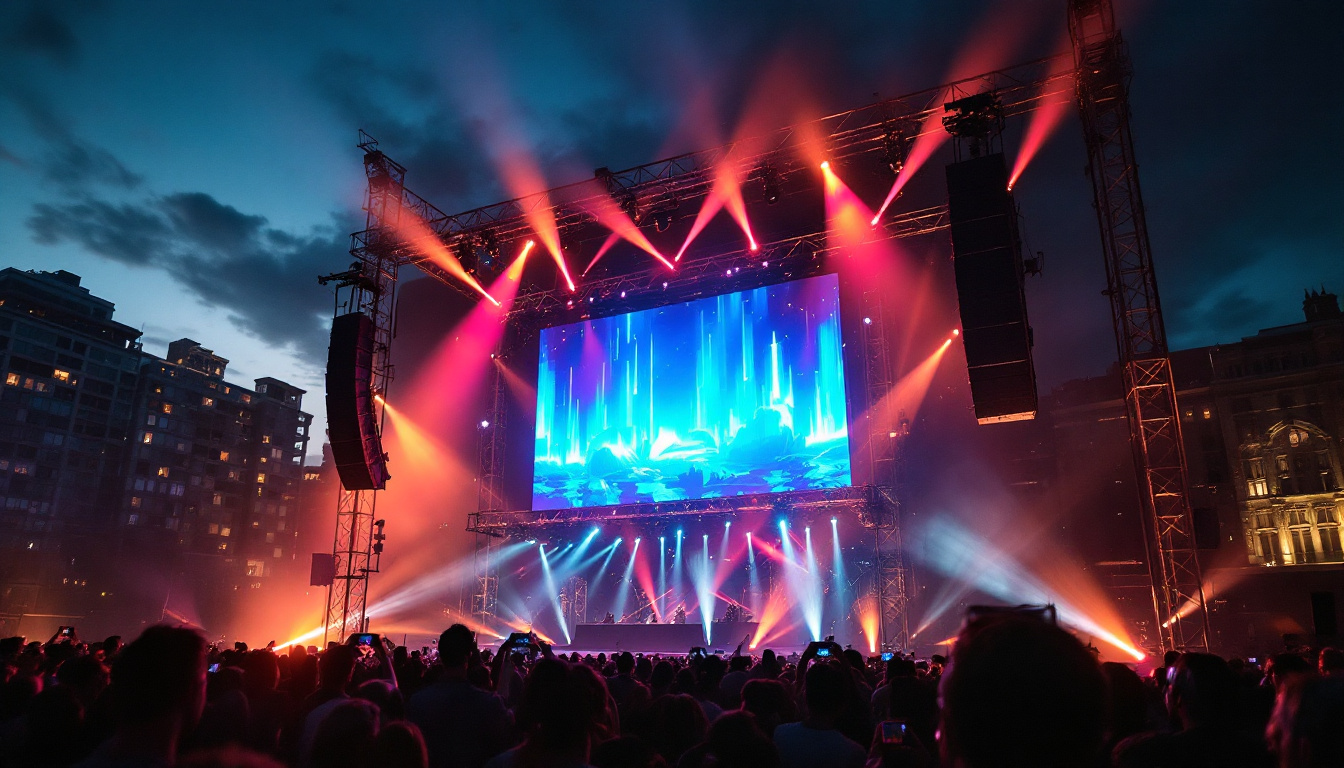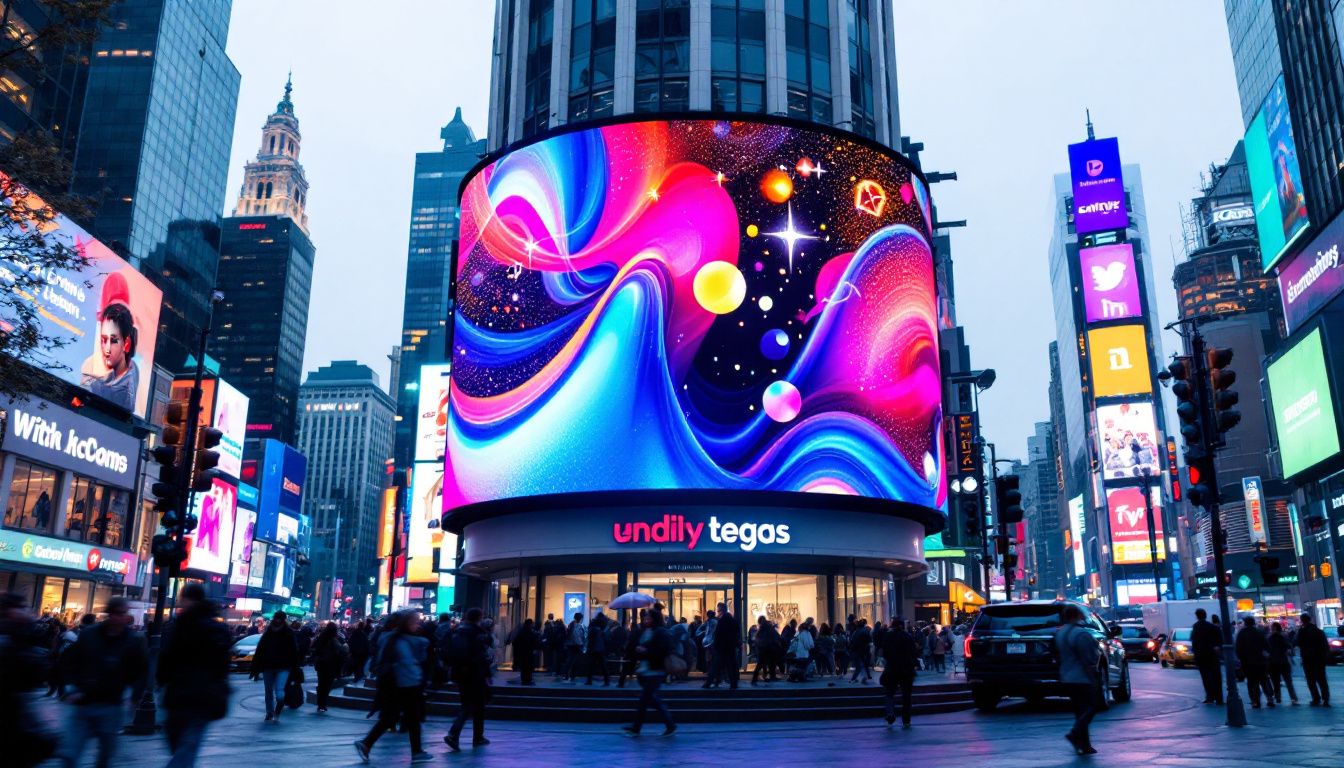In the realm of modern art presentation, LED display panels have emerged as a transformative technology. These panels not only enhance the visual experience but also provide artists and curators with innovative ways to showcase their work. This article delves into the intricacies of LED display panels, exploring their functionality, advantages, and applications in the art world.
Understanding LED Technology
Light Emitting Diodes (LEDs) are semiconductor devices that emit light when an electric current passes through them. This technology has evolved significantly over the years, leading to the development of high-quality LED display panels that are now widely used in various applications, including art displays. The versatility and efficiency of LEDs have made them a popular choice for both commercial and residential lighting solutions, contributing to energy savings and reduced environmental impact.
How LEDs Work
At the core of LED technology is the principle of electroluminescence. When electrons move through a semiconductor material, they release energy in the form of photons, producing light. The color of the light emitted depends on the materials used in the semiconductor. This allows for a wide range of colors and brightness levels, making LEDs ideal for vibrant displays. Moreover, the lifespan of LEDs is significantly longer than traditional incandescent bulbs, often exceeding 25,000 hours, which translates to less frequent replacements and lower maintenance costs.
Types of LED Displays
LED displays come in several types, each suited for different applications. The most common types include:
- Direct View LED Displays: These panels consist of individual LED modules that create images directly. They are known for their high brightness and excellent color accuracy, making them ideal for outdoor advertising and large venues where visibility is crucial.
- LED Backlit Displays: These screens use LEDs to illuminate an LCD panel from behind. While they offer good color reproduction, they do not achieve the same level of brightness as direct view displays. However, they are widely used in televisions and computer monitors due to their thin profile and energy efficiency.
- Organic LED (OLED) Displays: OLED technology uses organic compounds to emit light. These displays are known for their deep blacks and wide viewing angles, making them popular for high-end art displays. The flexibility of OLED technology also allows for innovative designs, such as curved screens and ultra-thin panels that can be integrated into various environments.
In addition to these types, there are also specialized LED displays designed for specific uses, such as transparent LED screens that allow for creative advertising without obstructing views, and flexible LED displays that can be shaped to fit unique architectural designs. The continuous advancements in LED technology are paving the way for even more innovative applications, such as smart lighting systems that can adapt to user preferences and environmental conditions, further enhancing the versatility of LED solutions in modern design.
Advantages of LED Display Panels in Art
LED display panels offer numerous advantages that make them an appealing choice for art exhibitions and installations. Their unique features enhance both the presentation of art and the overall viewer experience.
Vibrant Color and Brightness
One of the most significant advantages of LED displays is their ability to produce vibrant colors and high brightness levels. This capability allows artwork to be displayed in a way that captures the attention of viewers and highlights intricate details that might otherwise go unnoticed.
Moreover, LED technology supports a wide color gamut, enabling artists to present their work as intended. This is particularly important for digital art, where color accuracy can greatly influence the viewer’s perception and emotional response.
Energy Efficiency and Longevity
LED panels are known for their energy efficiency compared to traditional display technologies. They consume significantly less power, making them a sustainable choice for art exhibitions that may run for extended periods. This efficiency not only reduces operational costs but also minimizes the environmental impact of displaying art.
In addition to being energy-efficient, LED displays have a long lifespan. With proper care, they can last for tens of thousands of hours, reducing the need for frequent replacements and maintenance. This longevity is particularly beneficial for galleries and museums that host rotating exhibitions.
Flexibility and Customization
LED display panels offer unparalleled flexibility in terms of size, shape, and installation options. They can be configured to fit various spaces, from large-scale installations to smaller, intimate displays. This adaptability allows curators to create unique presentations that enhance the overall aesthetic of the exhibition space.
Furthermore, LED technology supports dynamic content, enabling artists to showcase their work in innovative ways. For instance, artists can create interactive installations or use motion graphics to engage viewers, transforming the traditional art experience into a more immersive one.
Applications of LED Display Panels in the Art World
The use of LED display panels in the art world is diverse, encompassing various applications that cater to different artistic expressions and audience engagement strategies.
Gallery Exhibitions
Many contemporary art galleries are embracing LED displays to enhance their exhibitions. These panels allow for the seamless integration of digital art alongside traditional mediums, creating a dialogue between different forms of artistic expression.
Additionally, galleries can use LED displays to provide information about the artwork, including artist statements, background information, and multimedia content. This added layer of context enriches the viewer’s experience and fosters a deeper understanding of the art on display.
Public Art Installations
Public art installations have also benefited from the advent of LED technology. Artists are increasingly using LED panels to create large-scale, eye-catching displays that engage the public and transform urban spaces.
These installations can be programmed to change over time, providing a dynamic visual experience that captures the attention of passersby. This interactivity not only attracts viewers but also encourages them to revisit the installation, as it can present new content or themes over time.
Art Fairs and Festivals
Art fairs and festivals are another area where LED display panels shine. These events often feature numerous artists and artworks, and LED displays can help create a cohesive visual experience across different booths and installations.
By utilizing LED panels, event organizers can create immersive environments that draw attendees in and encourage exploration. The ability to showcase video art, animations, and interactive pieces enhances the festival atmosphere, making it more engaging for visitors.
Challenges and Considerations
While LED display panels offer numerous advantages, there are also challenges and considerations that artists and curators must keep in mind when incorporating this technology into their work.
Cost Implications
One of the primary challenges associated with LED displays is the initial cost. High-quality LED panels can be expensive, and the investment may not be feasible for all artists or galleries. However, as technology advances and becomes more widespread, prices are gradually decreasing.
It is essential for artists and curators to weigh the benefits against the costs and consider potential funding options or partnerships that could help offset expenses. Grants, sponsorships, or collaborations with tech companies may provide opportunities to access LED technology without bearing the full financial burden.
Technical Expertise
Implementing LED display panels requires a certain level of technical expertise. Artists and curators may need to familiarize themselves with the technology, including software for content creation and management, as well as hardware installation and maintenance.
To address this challenge, many organizations offer workshops and training sessions on digital art and LED technology. Collaborating with professionals in the field can also help ensure a successful implementation, allowing artists to focus on their creative vision rather than technical hurdles.
Content Creation and Management
Creating content for LED displays can be both an exciting opportunity and a daunting task. Artists must consider how their work translates to a digital format and how to optimize it for the specific characteristics of LED technology.
Moreover, managing content on LED panels requires ongoing attention. Curators must regularly update and maintain the content to keep it fresh and engaging for viewers. This may involve developing a content calendar or collaborating with artists to ensure that the display remains relevant and dynamic.
The Future of LED Display Panels in Art
The future of LED display panels in the art world looks promising, with continued advancements in technology and increasing acceptance among artists and curators. As the boundaries between traditional and digital art continue to blur, LED displays will play a crucial role in shaping the future of artistic expression.
Innovations in Technology
Ongoing innovations in LED technology are likely to enhance the capabilities of display panels even further. Developments such as microLEDs, which offer improved resolution and color accuracy, may revolutionize the way art is presented. These advancements could lead to even more immersive and engaging experiences for viewers.
Additionally, the integration of augmented reality (AR) and virtual reality (VR) with LED displays presents exciting possibilities. Artists could create multi-dimensional experiences that transport viewers into their artistic worlds, further expanding the potential of LED technology in art.
Increased Collaboration
As the art community continues to embrace digital technology, collaborations between artists, technologists, and curators are likely to increase. These partnerships can lead to innovative projects that push the boundaries of artistic expression and engage audiences in new ways.
Such collaborations may also help bridge the gap between traditional art forms and digital media, fostering a greater appreciation for both. As artists explore new mediums and techniques, the dialogue surrounding art will evolve, creating a richer cultural landscape.
Conclusion
LED display panels have revolutionized the way art is presented and experienced. Their vibrant colors, energy efficiency, and flexibility make them an invaluable tool for artists and curators alike. As technology continues to advance, the potential for LED displays in the art world is boundless.
While challenges such as cost and technical expertise exist, the benefits of incorporating LED technology into art exhibitions far outweigh the drawbacks. By embracing this innovative medium, artists can create dynamic, engaging experiences that captivate audiences and redefine the boundaries of artistic expression.
As the art world continues to evolve, LED display panels will undoubtedly play a pivotal role in shaping the future of art presentation, offering new opportunities for creativity and engagement.
Explore the Future of Art Presentation with LumenMatrix
Ready to elevate your art exhibitions and captivate your audience with the latest in LED display technology? Discover LumenMatrix’s innovative solutions, from Indoor and Outdoor LED Wall Displays to specialized options like Vehicle, Sports, and Floor LED Displays. Our mission is to transform visual communication, ensuring your message resonates with vibrancy and precision. Check out LumenMatrix LED Display Solutions today and join the revolution in artistic expression and engagement.


